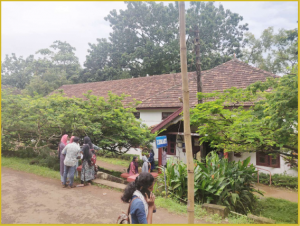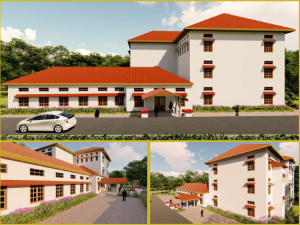State of The Art Library
The present library, which is nine decades old and has a building space of 9300 sq. ft, is not adequate to meet the demands of more than 2200 students, 120 research scholars, 144 faculty, and 58 non-teaching staff and other people from the nearby community approaching us for reference. It has a collection of 83,000 books (some of them invaluable, dating as far back as the 1880s) and journals. Now it is fully automated with the international software, Alice for Windows, and has been networked with all the teaching departments. Today, we are faced with acute space constraints both for the users and for the books that result in an unhealthy physical ambiance, and an inadequate facility for online teaching-learning activities. It is also expected to be a hub of knowledge exchange with an international community. Given the present educational requirements, it is important for the library to strengthen its digital infrastructure.

The conventional storage of hard copies of books, journals, and other reference materials is undergoing tremendous changes and it is imperative for the library to have (a) digital storage facilities, (b) accessibility standards, and procedures, (c) archiving of resources, (d) security of resources, (e) necessary bandwidth to accommodate anytime access of users, (f) customizing suitable remote ware (software), subscribing to digital databases and quality digital resources in terms of quality publications, etc. Moreover, it is also important to have a full-fledged digital library section to accommodate at least 15 to 20 percent of the student population at any given point of time.
Hence, we propose to construct a state-of-the-art library building of 22,000 sq. ft. costing Rs. 6.50 Crores which would have such facilities as free and easy access to information resources from across the world, facilities for information commons, appropriately equipped space for the visually and physically challenged, a technology training center for women and children from the neighborhood, special cubicles for research fellows, audiovisual room, space for video-conferencing, space for the production of digital teaching/learning resources, archives, seminar rooms, etc.

This will also be a facility accessible to teachers and students in the neighboring educational institutions for a nominal fee. We need the support of all educational agencies to make this library the knowledge hub of not only the UCC but also the backward communities in the neighborhood and local self-governing institutions.